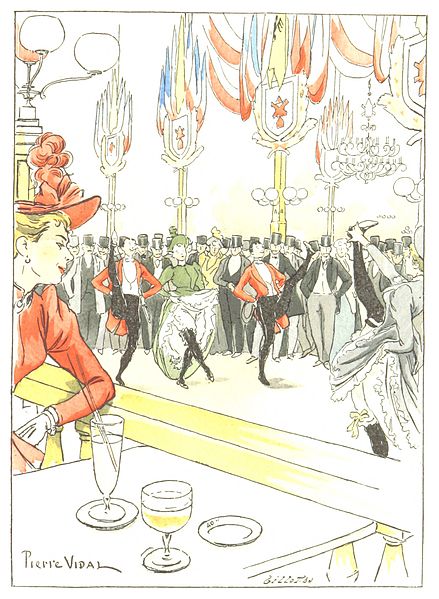The can-can is a high-energy, physically demanding dance that became a popular music-hall dance in the 1840s, continuing in popularity in French cabaret to this day. Originally danced by couples, it is now traditionally associated with a chorus line of female dancers. The main features of the dance are the vigorous manipulation of skirts and petticoats, along with high kicks, splits, and cartwheels.
Depiction of the can-can by Henri de Toulouse-Lautrec, 1895
Georges Seurat, 1889–90, Le Chahut, oil on canvas, 170 cm × 141 cm (67 in × 56 in), Kröller-Müller Museum
Toulouse-Lautrec, Jane Avril Dancing
Giuseppina Morlacchi introduced the can-can to American audiences in 1867.
Cabaret is a form of theatrical entertainment featuring music, song, dance, recitation, or drama. The performance venue might be a pub, a casino, a hotel, a restaurant, or a nightclub with a stage for performances. The audience, often dining or drinking, does not typically dance but usually sits at tables. Performances are usually introduced by a master of ceremonies (M.C.). The entertainment, as performed by an ensemble of actors and according to its European origins, is often oriented towards adult audiences and of a clearly underground nature. In the United States, striptease, burlesque, drag shows, or a solo vocalist with a pianist, as well as the venues which offer this entertainment, are often advertised as cabarets.
Cafe Le Chat Noir c. 1920
The Café des Aveugles in the cellars of the Palais-Royal (beginning of the 19th century)
The composer Eric Satie playing the piano at Le Chat Noir (1880s)
The Moulin Rouge in 1893








